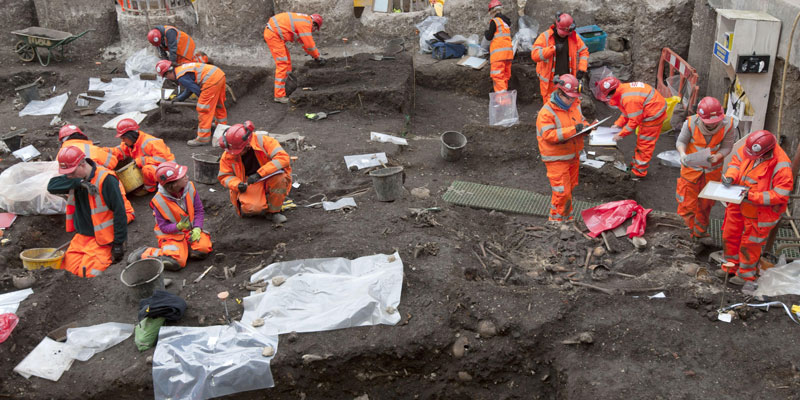The issue
Archaeological data are unique. Because the process of excavation destroys the archaeological record that is excavated, data becomes the only way for future archaeologists to ask new questions of that record.
Preserving archaeological data and safeguarding it from loss is important to ensure it is easily accessible for future re-use, and is still a valuable resource for research.
The research
In 1996 the use of the Internet was in its infancy. The challenge of digital preservation was only just being recognised. The research team at York pioneered methods of exploiting the new technology to address the problem of the preservation and accessibility of archaeological data.
A key research project was the creation of the so-called ‘Grey Literature Library’. Before 2000 it had been extremely difficult for archaeologists to gain access to these unpublished fieldwork reports. ADS led research into the capture, flow and usability of data from producers, ranging from contracting units and community groups, to users, including local and national data managers. This led to the development of the OASIS online service, now adopted for the reporting of all archaeological fieldwork throughout England and Scotland. Data loss was also a major challenge and, in 2012, our research led to the Digital Preservation Coalition’s prize for the most outstanding contribution to digital preservation of the previous decade.
As demand for online resources increased, the ADS considered how knowledge of the past could best be served by a digital infrastructure for cultural heritage at European level. The ADS led the EU-funded ARENA project to research a shared, interoperable information infrastructure. This was developed in the ARIADNE and ARIADNEplus projects. ADS is the only archaeological archive (and one of only three UK partners) in SSHOC (Social Sciences and Humanities Open Cloud), a major EU initiative which brings together all the research infrastructures across the Social Sciences and Humanities. Our role has been to investigate data standards and policies to allow archaeology to participate fully within the European Open Science Cloud.
The outcome
Our research into digital preservation and access has put the UK at the forefront of archiving developments throughout the world, and our impact now extends across national heritage agencies, local government, commercial contract archaeology, and the general public.
The ADS Library now contains over 60,000 unpublished fieldwork reports and is growing by at least 4,000 reports per year, allowing non-academic users unprecedented access to information. OASIS is used by 137 local authorities (to sign-off planning conditions), four national heritage agencies (to update national lists), and eight other agencies (including the Ministry of Defence, Historic Royal Palaces and the National Trust) for notifications about archaeological work.
The ADS has transformed the ways in which the results of archaeological fieldwork, undertaken in advance of major transport infrastructure projects, are archived and disseminated. The HS2 rail project notes that their ADS digital archive will be “the largest historic environment digital archive ever compiled in the UK”. ADS will allow them to safeguard their “digital legacy for future generations and deliver HS2 Ltd’s commitment to making data easily available under the government’s transparency agenda”.
Finally, the ADS has been adopted as a model by many overseas state archaeological repositories, including those in the US, Sweden, the Netherlands, Austria, Germany, France, Turkey, Argentina, and Japan. ADS also leads the development of international standards for digital curation. In Japan the Nara Research Institute has translated the ADS Guides to Good Practice to provide data standards for Japanese archaeologists, and the Guides have also provided the basis for those published by the Swedish National Data Service. The Austrian Academy of Sciences report that ADS “policy documents served as best practice examples for our own”, whilst the Director of the British Institute in Ankara, comments that the Guides are “essential utensils to gather the know-how to create a new digital repository”.

